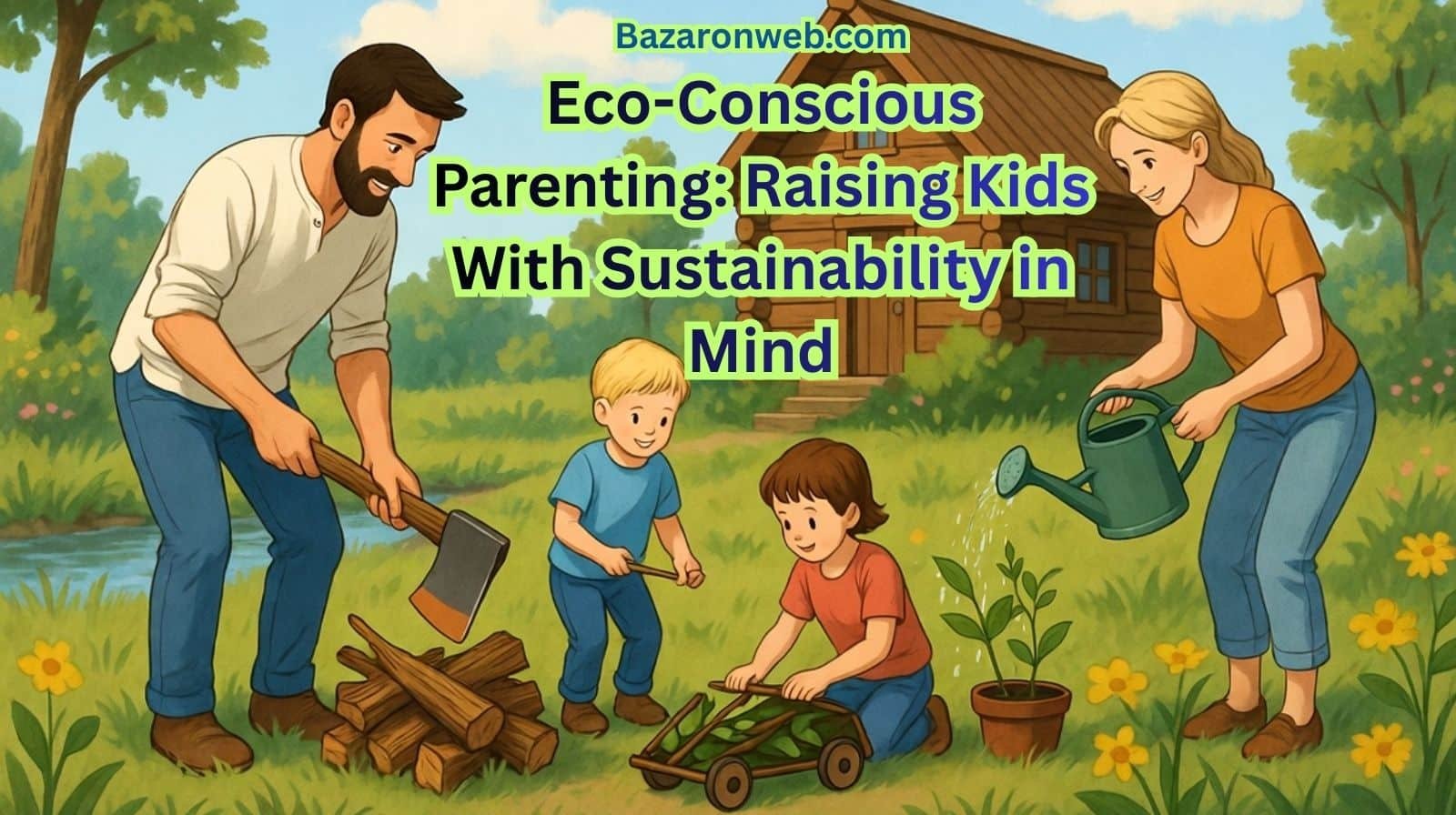Category
Popular Articles
- AI (9)
- Android (35)
- App Suggest (4)
- Apple (5)
- Apple TV (2)
- Bluetooth (2)
- Cars (2)
- ChatGpt (1)
- Did you know? (1)
- E-Commerce News (1)
- Ecommerce Websites business (7)
- Electronics Shopping (5)
- Fashion Tips (3)
- Gaming (3)
- Google Gemini (3)
- Hair Care Tips (2)
- How to (13)
- iCloud (1)
- Infotainment System (1)
- Iphone (93)
- Job Posting (1)
- Mac (18)
- Mobile Games (1)
- Netflix (1)
- Online Shopping Websites (2)
- Personal Finance Management (3)
- Product Reviews (3)
- Roku TV (4)
- Samsung (7)
- Shopping Tips (10)
- Tech (60)
- Windows 11 (4)
- Zero Waste (3)
Discounted Products
-
 Leo Creation 144 TC Cotton Double Jaipuri Prints Flat Bedsheet(Pack of 1, Blue, Gree, Red, Grey, Light Grey)
Leo Creation 144 TC Cotton Double Jaipuri Prints Flat Bedsheet(Pack of 1, Blue, Gree, Red, Grey, Light Grey)
₹2,999.00Original price was: ₹2,999.00.₹329.00Current price is: ₹329.00. -
 Home Garage 210 TC Cotton King Floral Fitted (Elastic) Bedsheet(Pack of 1, Grey)
Home Garage 210 TC Cotton King Floral Fitted (Elastic) Bedsheet(Pack of 1, Grey)
₹999.00Original price was: ₹999.00.₹299.00Current price is: ₹299.00. -
 Goodrik 140 TC Cotton Double 3D Printed Flat Bedsheet(Pack of 1, Brown)
Goodrik 140 TC Cotton Double 3D Printed Flat Bedsheet(Pack of 1, Brown)
₹499.00Original price was: ₹499.00.₹229.00Current price is: ₹229.00. -
 GLOBALSHOP 350 TC Microfiber Double Floral Flat Bedsheet(Pack of 1, Multicolor)
GLOBALSHOP 350 TC Microfiber Double Floral Flat Bedsheet(Pack of 1, Multicolor)
₹1,250.00Original price was: ₹1,250.00.₹263.00Current price is: ₹263.00. -
 RisingStar 250 TC Microfiber King Printed Fitted (Elastic) Bedsheet(Pack of 1, FITTED-ROUND-CIRCLES-PREMIUM)
RisingStar 250 TC Microfiber King Printed Fitted (Elastic) Bedsheet(Pack of 1, FITTED-ROUND-CIRCLES-PREMIUM)
₹2,299.00Original price was: ₹2,299.00.₹299.00Current price is: ₹299.00. -
 Home Garage 210 TC Cotton King Floral Fitted (Elastic) Bedsheet(Pack of 1, Fitted Black Green)
Home Garage 210 TC Cotton King Floral Fitted (Elastic) Bedsheet(Pack of 1, Fitted Black Green)
₹1,299.00Original price was: ₹1,299.00.₹299.00Current price is: ₹299.00. -
 Home Garage 180 TC Cotton King 3D Printed Flat Bedsheet(Pack of 1, White)
Home Garage 180 TC Cotton King 3D Printed Flat Bedsheet(Pack of 1, White)
₹999.00Original price was: ₹999.00.₹229.00Current price is: ₹229.00. -
 Home Sizzler 153 cm (5 ft) Polyester Room Darkening Window Curtain (Pack Of 2)(Floral, Maroon)
Home Sizzler 153 cm (5 ft) Polyester Room Darkening Window Curtain (Pack Of 2)(Floral, Maroon)
₹799.00Original price was: ₹799.00.₹299.00Current price is: ₹299.00. -
 Panipat Textile Hub 152.4 cm (5 ft) Polyester Window Curtain (Pack Of 2)(Solid, Aqua)
Panipat Textile Hub 152.4 cm (5 ft) Polyester Window Curtain (Pack Of 2)(Solid, Aqua)
₹1,899.00Original price was: ₹1,899.00.₹299.00Current price is: ₹299.00. -
 Home Sizzler 214 cm (7 ft) Polyester Semi Transparent Door Curtain (Pack Of 2)(Floral, Maroon)
Home Sizzler 214 cm (7 ft) Polyester Semi Transparent Door Curtain (Pack Of 2)(Floral, Maroon)
₹1,199.00Original price was: ₹1,199.00.₹399.00Current price is: ₹399.00. -
 Home Sizzler 153 cm (5 ft) Polyester Room Darkening Window Curtain (Pack Of 2)(Floral, Brown)
Home Sizzler 153 cm (5 ft) Polyester Room Darkening Window Curtain (Pack Of 2)(Floral, Brown)
₹799.00Original price was: ₹799.00.₹299.00Current price is: ₹299.00. -
 Stella Creations 214 cm (7 ft) Polyester Room Darkening Door Curtain (Pack Of 2)(Abstract, Brown)
Stella Creations 214 cm (7 ft) Polyester Room Darkening Door Curtain (Pack Of 2)(Abstract, Brown)
₹1,299.00Original price was: ₹1,299.00.₹449.00Current price is: ₹449.00. -
 Homefab India 152.5 cm (5 ft) Polyester Room Darkening Window Curtain (Pack Of 2)(Floral, Light Blue)
Homefab India 152.5 cm (5 ft) Polyester Room Darkening Window Curtain (Pack Of 2)(Floral, Light Blue)
₹1,199.00Original price was: ₹1,199.00.₹319.00Current price is: ₹319.00. -
 Urban Home 214 cm (7 ft) PVC Transparent Door Curtain Single Curtain(Solid, Off White)
Urban Home 214 cm (7 ft) PVC Transparent Door Curtain Single Curtain(Solid, Off White)
₹699.00Original price was: ₹699.00.₹203.00Current price is: ₹203.00. -
 Panipat Textile Hub 213 cm (7 ft) Polyester Door Curtain (Pack Of 2)(Solid, Brown)
Panipat Textile Hub 213 cm (7 ft) Polyester Door Curtain (Pack Of 2)(Solid, Brown)
₹1,199.00Original price was: ₹1,199.00.₹349.00Current price is: ₹349.00.
Affiliate Links
Promotion

By Jessica ( Bazaronweb.com)
Raising environmentally aware children is no longer just a lifestyle trend—it’s becoming one of the most meaningful responsibilities modern families are embracing across the United States. As someone who spends a lot of time researching sustainability, consumer behavior, and responsible living, I’ve seen firsthand how the choices we make at home shape not only our environmental footprint but also our children’s values, habits, and long-term mindset.
Eco-conscious parenting isn’t about perfection, and it’s certainly not about placing pressure on families to overhaul their entire lifestyle overnight. It’s about small, strategic, and sustainable steps that allow children to grow up understanding their role in protecting the planet. Whether a family lives in a bustling urban apartment, a suburban neighborhood, or a rural community, the principles remain the same: awareness, intentional choices, and long-term thinking.
In recent years, sustainability has shifted into the mainstream. According to a 2024 Pew Research Center survey, 72% of American parents say they want their children to grow up environmentally responsible, and nearly half have already made lifestyle changes to reduce waste or lower their household’s carbon footprint. That shift is visible everywhere—from what we pack in lunchboxes to the toys we buy, the vacations we plan, and the way we talk about nature with our kids.
But eco-conscious parenting isn’t just about reducing waste or buying “green” products. It’s about raising children who understand stewardship, empathy, resourcefulness, and long-term thinking. Those values matter now more than ever.
Why Kids Benefit From Eco-Conscious Habits
When children learn sustainable habits early, they experience a range of developmental benefits—many backed by data.
1. Enhanced Responsibility and Independence
Kids who care for plants, sort recycling, or help reduce water use develop a deeper sense of responsibility. Research from the American Psychological Association shows that giving children daily eco-tasks boosts confidence and self-management skills.
2. Stronger Emotional Connection to Nature
Time outdoors increases well-being, attention span, and emotional regulation. The National Wildlife Federation found that kids who regularly engage with nature demonstrate higher creativity and lower stress levels.
3. Smarter Consumption Habits
Teaching children to differentiate between “wants” and “needs” reduces impulsive consumption. In a world filled with constant advertising, this early boundary-setting is both environmentally and financially valuable.
Creating a Low-Waste Household That Kids Understand
Children learn by watching, not lecturing. So when families establish low-waste routines, kids naturally absorb those behaviors.
1. Start With Kid-Friendly Swaps
Small swaps are easier to adopt and maintain. A few smart areas to begin:
- Reusable lunch containers instead of disposable bags
- Stainless steel water bottles instead of single-use bottles
- Cloth napkins for meals
- Bulk snacks divided at home instead of individually packaged items
- Hand-me-down clothing to reduce textile waste
Kids love the idea of “my bottle,” “my lunchbox,” or “my napkin.” Personal ownership reinforces consistency.
2. Make Waste Sorting Interactive
Recycling and composting can become an engaging learning activity. Consider:
- Color-coded bins
- Simple picture labels for younger kids
- A weekly “waste check” to see how much trash the family created
Some families even turn it into a game: “Which bin does this go in?” This turns environmental habits into a natural part of everyday life.
3. Teach the “Use What You Have First” Rule
One of the most powerful sustainability lessons for children is using existing items before buying new ones. This principle helps kids fight the urge to accumulate unnecessary toys, clothes, or supplies.
It’s amazing how fast this mindset clicks. Children start reusing old jars for crafts, repurposing cardboard boxes for play, or turning worn-out clothes into rags or toy costumes. This nurtures creativity while reducing waste.
Raising Kids With Eco-Friendly Eating Habits
Food choices play a huge role in both sustainability and family health. And helping kids understand where food comes from can change the way they eat for life.
1. Introduce Them to Sustainable Foods
That doesn’t mean forcing a child to eat kale salad twice a week—it’s about offering healthier, lower-impact options:
- Seasonal fruits
- Farmer’s market produce
- Whole grains
- Plant-forward meals
- Lower-waste snacks
Families across the U.S. are adopting a “flexitarian” approach—still enjoying familiar meals while gradually increasing plant-based options.
2. Involve Kids in Cooking and Meal Planning
Kids who help cook are more likely to try new foods and reduce leftovers. Simple tasks like washing vegetables, measuring ingredients, or stirring a pot give children a sense of ownership over what they eat.
This also prevents food waste. When kids understand how much work goes into preparing a meal, they become more mindful of finishing what’s on their plate.
3. Grow Something—Anything
Even a small pot of herbs on a windowsill can spark curiosity about food and nature. Families who garden report:
- More willingness from kids to try vegetables
- Reduced household food waste
- Increased time outdoors
- A stronger understanding of natural cycles
The goal isn’t to become fully self-sufficient—it’s to teach kids the value of nurturing life.
The Role of Eco-Friendly Play and Learning
Toys and educational tools don’t have to be wasteful or plastic-heavy. In fact, many families are shifting toward:
- Wooden toys
- Secondhand toys
- Art supplies made from recycled materials
- Experiences rather than objects
Children don’t need excess—they need stimulation, creativity, movement, and connection. Eco-friendly play isn’t restrictive; it’s liberating.
Eco-conscious parenting isn’t about raising perfect children or striving for a minimalist lifestyle that feels out of reach. It’s about creating a home environment where sustainability becomes second nature—something kids grow up understanding intuitively. In the second half of this article, I want to expand on the practical side of this philosophy: how we weave sustainability into everyday routines, encourage environmental responsibility, and empower kids to participate in solutions instead of feeling overwhelmed by the challenges facing the planet.
Teaching Kids About Resources: Water, Energy & Materials
One of the strongest messages we can share with children is that the planet has limits. Kids today live in a world of instant gratification—lights turn on with a tap, water flows immediately, and packages arrive in a day. To counterbalance that convenience, parents can help kids understand the invisible cost behind everyday actions.
1. Water Awareness
Start simple:
- Turn off the faucet while brushing teeth.
- Collect rainwater for plants.
- Time showers to reduce water waste.
When children learn early that water isn’t infinite, they become more thoughtful adults later.
2. Energy Literacy
Make energy lessons visual:
- Show kids how lights, chargers, and appliances use power.
- Create a “lights off challenge” where kids check rooms before bed.
- Share what solar panels or EV chargers do, if your home has them.
Explaining how electricity is produced helps kids see why conserving energy matters.
3. Understanding Material Lifecycles
Children are naturally curious about where things come from. This is an opportunity to teach them how materials are sourced and where they go when thrown away.
Try:
- Exploring recycling centers through online videos.
- Showing kids how paper, plastic, and metal are transformed.
- Explaining what “biodegradable” and “compostable” really mean.
Once kids understand the journey behind a product, they automatically become more mindful consumers.
Eco-Friendly Habits for School-Aged Kids
School is one of the biggest areas where families can make meaningful sustainability improvements. From lunches to supplies to extracurriculars, daily decisions matter.
1. Waste-Free Lunches
A few simple swaps reduce hundreds of pieces of plastic per year:
- Bento boxes instead of plastic baggies
- Reusable utensils
- Cloth napkins
- Refillable water bottles
- Snacks packed from bulk containers
Kids enjoy choosing their containers, stickers, labels, or colors—it helps reinforce consistency.
2. Sustainable School Supplies
Not everything needs to be new. Some of the most responsible choices include:
- Mechanical pencils
- Recyclable notebooks
- Refillable markers
- Secondhand or donated binders
- Backpacks repaired instead of replaced
Schools often appreciate parents who ask thoughtful questions about recycling programs, green initiatives, or eco-clubs. Kids feel proud to be part of those efforts.
3. Eco-Friendly Commuting
Whenever possible:
- Walk
- Bike
- Carpool
- Use safe public transit
Children who grow up experiencing alternative transportation have a better understanding of how individual choices affect the environment.
Minimalism and Mindful Consumption for Kids
Minimalism doesn’t mean limiting a child’s joy. It means giving them the tools to appreciate what they have. Americans are surrounded by excess—and studies show that kids with fewer toys often exhibit stronger creativity and longer attention spans.
1. The “One In, One Out” Rule
Every time a new item enters the home, an old one is donated or reused. This teaches kids to evaluate what they truly value.
2. Prioritizing Experiences Over Stuff
Research consistently shows that children gain more emotional and cognitive benefits from:
- Nature outings
- Museum trips
- Sports activities
- Classes and workshops
- Camping or family travel
Experiences deepen family bonds and reduce clutter.
3. Teaching Kids About Advertising
Children are heavily targeted by ads—especially online. Helping them understand marketing tricks builds media literacy and reduces impulsive desire for new toys or trends.
Eco-Conscious Digital Habits
Sustainability today isn’t just about physical waste—it’s also about digital responsibility. Kids growing up in a technology-saturated world need guidance on eco-friendly digital habits.
1. Managing Screen Time
More screen time = more energy consumption. Setting reasonable limits supports both sustainability and healthy development.
2. Responsible Device Use
Teach kids to:
- Turn off tablets and consoles, not leave them on standby
- Charge devices only when needed
- Use energy-efficient settings
Small habits multiplied across millions of households make a visible difference.
3. Extending Device Lifespan
The most eco-friendly device is the one you keep the longest.
Show kids how to take care of:
- Laptop screens
- Keyboard hygiene
- Cable management
- Protective cases
These skills extend beyond sustainability—they build lifelong responsibility.
Community Involvement and Collective Impact
Eco-conscious habits don’t have to stay at home. Community engagement teaches kids that sustainability is a shared mission.
1. Local Events
Many towns host:
- Lake or park clean-ups
- Tree-planting days
- Recycling drives
- Farmers markets
- Nature workshops
Kids learn best when they see real-world impact.
2. School Programs
Encourage participation in:
- Environmental clubs
- Garden clubs
- Sustainability committees
Children thrive when they feel part of something bigger.
3. Volunteer Together
Helping others fosters compassion and social responsibility—two values deeply tied to sustainability.
Raising Global Citizens
The ultimate goal of eco-conscious parenting is raising children who understand the world beyond their own backyard. Sustainability is global. Climate issues, waste management, and conservation impact everyone, and kids benefit from learning about cultures, innovations, and environmental solutions around the world.
Share with children:
- International conservation stories
- Documentaries
- Books about nature and ecosystems
- Global sustainability leaders
When kids understand the bigger picture, they grow into informed, compassionate adults.
Conclusion
Eco-conscious parenting isn’t about being perfect—it’s about being purposeful. Every small action, from packing reusable lunches to discussing where energy comes from, builds a foundation for children to become thoughtful, resourceful, and environmentally aware adults. And when families commit to sustainability together, the impact goes far beyond the home. It becomes a legacy.
Written by Bazaronweb
Latest Tech Articles
- Retirement Planning for Younger Professionals in the U.S.: Roth IRAs, ESG Funds, and More.

- Budgeting in 2026: high inflation, investing, and building savings.

- Smart Money Management – Side hustle ideas for different age groups (Gen Z, Millennials, mid-career).

- Eco-Conscious Parenting: Raising Kids With Sustainability in Mind

- Green home improvements: energy-efficient gadgets, solar, and smart thermostats.

Products
-
![Apple Watch Ultra 3 [GPS + Cellular 49mm] Running & Multisport Smartwatch w/Rugged Titanium Case w/Black Titanium Milanese Loop - M. Satellite Communications, Advanced Health & Fitness Tracking](https://bazaronweb.com/retailstores/wp-content/uploads/2025/09/apple-watch-320x320.jpg) Apple Watch Ultra 3 [GPS + Cellular 49mm] Running & Multisport Smartwatch w/Rugged Titanium Case w/Black Titanium Milanese Loop - M. Satellite Communications, Advanced Health & Fitness Tracking
Apple Watch Ultra 3 [GPS + Cellular 49mm] Running & Multisport Smartwatch w/Rugged Titanium Case w/Black Titanium Milanese Loop - M. Satellite Communications, Advanced Health & Fitness Tracking
-
 Apple iPad mini (A17 Pro): Apple Intelligence, 8.3-inch Liquid Retina Display, 256GB, Wi-Fi 6E, 12MP Front/12MP Back Camera, Touch ID, All-Day Battery Life — Purple
Apple iPad mini (A17 Pro): Apple Intelligence, 8.3-inch Liquid Retina Display, 256GB, Wi-Fi 6E, 12MP Front/12MP Back Camera, Touch ID, All-Day Battery Life — Purple
-
 Apple AirPods Max Wireless Over-Ear Headphones, Active Noise Cancelling, Transparency Mode, Personalized Spatial Audio, Dolby Atmos, Bluetooth Headphones for iPhone – Space Gray
Apple AirPods Max Wireless Over-Ear Headphones, Active Noise Cancelling, Transparency Mode, Personalized Spatial Audio, Dolby Atmos, Bluetooth Headphones for iPhone – Space Gray
-
 Apple AirPods Pro 2 Wireless Earbuds, Active Noise Cancellation, Hearing Aid Feature, Bluetooth Headphones, Transparency, Personalized Spatial Audio, High-Fidelity Sound, H2 Chip, USB-C Charging
Apple AirPods Pro 2 Wireless Earbuds, Active Noise Cancellation, Hearing Aid Feature, Bluetooth Headphones, Transparency, Personalized Spatial Audio, High-Fidelity Sound, H2 Chip, USB-C Charging
-
 Leo Creation 144 TC Cotton Double Jaipuri Prints Flat Bedsheet(Pack of 1, Blue, Gree, Red, Grey, Light Grey)
Leo Creation 144 TC Cotton Double Jaipuri Prints Flat Bedsheet(Pack of 1, Blue, Gree, Red, Grey, Light Grey)
₹2,999.00Original price was: ₹2,999.00.₹329.00Current price is: ₹329.00.
Leave a Reply